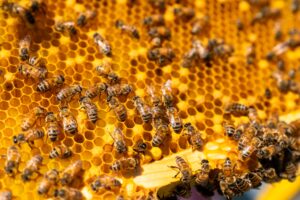Commonly known as ‘dessert stomach’, our incredible ability to find space for mince pies, chocolates and that slice of pav is actually an evolutionary advantage.
Back when clubbing a mammoth was the culinary equivalent of glazing a ham, it was in our best interests to eat a variety of foods. Sure, mammoth is high in protein. But where’s your vitamin C and dietary fibre?
“In evolutionary history, variety was important,” says Russell Keast, a trained chef, professor of food science and director of Deakin University’s Centre for Advanced Sensory Science. “Different foods provided a variety of nutrients, which helped us survive by providing everything we need for normal function.”
And the road to nutritional variety was boredom—otherwise known as sensory-specific satiety.
“We get bored with eating the same food. That boredom integrates with fullness, and so we say, ‘I’ve had enough, I’ll stop eating”
The dessert bar is open!
Modern taste buds need never get bored. Today’s supermarkets offer many thousands of food options. And more options = more eating.
Knowing a particular food tastes amazing makes the effect even more pronounced.
“We may think ‘I’m full’, but when presented with a completely different food, and one we know is sweet, we make our choice to consume,” Russell says.
The effect isn’t limited to humans. When rats are offered four or five bottles to feed from, they eat more than when they are offered only two.

Relax, it’s dessert
Dessert’s secret powers don’t only stem from variety.
Our feeling of fullness comes from the release of hormones after we’ve absorbed nutrients from food. It also comes from the constriction of our stomach, and it’s here that sugar plays its ace.
Consuming sugar relaxes your stomach, making it possible to fit more in. “When we have sugar, we start to feel less full and have more capacity to consume,” Russell says.
So, not only is ice cream different from ham, it’s also sweet and tasty and gives us more room to eat. What’s a caveman to do?
Russell’s advice for surviving Christmas?
You don’t have to skip dessert.
“Don’t worry about it,” Russell says. “Enjoy yourself and have a good time.”
If you do overindulge this silly season, be a bit miserly with what you eat next week, he says. “It’s been calculated that 80% of the obesity problem we face today would be solved by the reduction of what equates to the consumption of one apple per person per day.”







